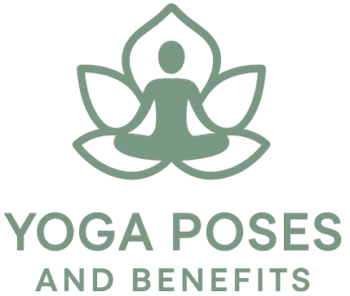Whether you’re a beginner taking your first steps onto the mat or an aspiring yoga teacher ready to guide others on their journey, this webpage is designed just for you. Yoga is a transformative practice that nurtures the body, mind, and spirit, fostering both strength and inner peace. Here, you’ll find essential yoga tips to help you start your practice confidently and safely. Remember, every yogi’s journey is unique, and the only requirement is an open mind and a willing heart. Let’s embark on this enriching path together!
Understanding the Basics of Beginner Yoga
The moment you begin beginner yoga, you’ll find expectations slipping away. You might think, “I should be able to touch my toes already,” or “This seems so easy on Instagram – why can’t I do it?” It’s easy to feel pressured into thinking you need a wardrobe that rivals Jane Fonda’s Lycra collection—cue eye roll. Focus on what truly matters: the core of your practice. While you might be here searching for the best yoga tips to start your journey to beginner yoga physically, it’s essential to begin mentally. When you’re in the right mindset, your yoga practice will naturally unfold as a beautiful and safe journey.
For many beginners, embarking on a yoga journey can feel overwhelming. You may question how to integrate a consistent class into your life when you’re out of shape and short on time. The good news is, even with just a few minutes each day, you can make your practice work. There are countless ways to be successful from the start. That’s why we’ve gathered our best tips for yoga beginners! By embracing small sessions and gradually building up, you’ll nourish both body and mind. Check out our blog on how to improve focus through beginner yoga to deepen your understanding of this transformative practice.
Remember, attending a yoga studio or a class is not the only way to begin. Explore poses at home, and find what feels good for you. Every class brings new learning, and every pose is a step towards growth.

What is Beginner Yoga?
Beginner yoga is a wonderful way for yoga beginners to embark on their wellness journey. Yoga has the remarkable ability to gently introduce beginners to the physical and mental benefits of this ancient practice. In beginner’s classes, the focus is on building a solid foundation so that beginners can feel confident and competent in their yoga practice. In these classes, understanding basic poses and simple stretches are emphasized because they’re the building blocks for more advanced postures. With consistent practice, yoga can help improve flexibility and enhance the overall well-being of your body. It’s not just about the body, though; yoga also encourages mindfulness, helping you connect more deeply with yourself. Beginners will find that yoga classes pave the way for a more balanced, centered life.
Remember, yoga is adaptable to everyone, and you don’t need to be a pro to enjoy its benefits. Joining beginner yoga classes helps create a supportive environment where you’re surrounded by fellow beginners who share the same enthusiasm and curiosity.
For starters, you might want to focus on developing breath awareness, learning how to coordinate your breath with movement. This practice is vital in ensuring that your body and mind are aligned, helping you to stay present during your yoga sessions. With dedication, yoga will become an integral part of your daily routine, allowing you to experience a transformation in both body and mind.
Remember, it’s all about progress, not perfection; so, go ahead, take that first step and embrace the wonderful world of beginner yoga.
The top 7 yoga poses for beginners:
- Child’s Pose (Balasana) – Gentle resting pose to relax and stretch the back.
- Downward-Facing Dog (Adho Mukha Svanasana) – Builds strength and stretches the whole body.
- Mountain Pose (Tadasana) – Foundation for all standing poses; promotes good posture.
- Cat-Cow Pose (Marjaryasana-Bitilasana) – Warms up the spine and improves flexibility.
- Warrior I (Virabhadrasana I) – Builds strength, balance, and focus.
- Seated Forward Fold (Paschimottanasana) – Gently stretches the back and hamstrings.
- Bridge Pose (Setu Bandhasana) – Strengthens the core, glutes, and lower back.
Key Elements of a Successful Yoga Class
A successful yoga class involves key elements that cater to both beginner yoga practitioners and experienced students. As a yoga teacher, the first step is to create a welcoming atmosphere at the yoga studio. This climate encourages students to confidently explore their yoga practice. Start each class by setting a clear intention, which provides focus and direction. It’s essential for the yoga teacher to guide students through each pose with patience and clarity, emphasizing proper alignment and safety.
Using modifications and props can significantly enhance the experience for beginners and prevent injury. Time management is crucial in conducting seamless yoga classes. Allocate sufficient time to warm up, practice, and cool down, allowing students to fully transition through different stages of the class. Also, ensure there’s time for guided meditation or breathing exercises to foster mental calmness.
Building a sense of community within the class encourages students to connect and learn from each other, enhancing their journey. As instructors, understand that each student’s practice is personal; therefore, provide room for individual growth and adaptation.
To expand your skills and understanding, check out a beginner’s guide to yoga mats to explore essential equipment that complements your yoga class. New teachers might feel nervous at times, but remember that learning and adapting are part of the process. Adopting these elements will ensure that your yoga classes resonate with and benefit all participants, making each student’s practice rewarding and enriching as they start their yoga journey. Encouraging consistency and engagement in practice will yield long-term benefits for everyone involved.

Essential Yoga Attire for Beginners
As a beginner in yoga, choosing the right attire can greatly enhance your practice. One of the first yoga tips you’ll hear is to wear comfortable clothing that allows for freedom of movement. Whether you’re attending a class or practicing a pose at home, your outfit should not restrict your body in any way. Think about yoga clothing that is breathable and adapts to your poses with ease. Leggings or form-fitting shorts paired with a lightweight top are ideal for beginners, ensuring you can focus on executing each pose rather than adjusting ill-fitted wear. Additionally, selecting the right mat is crucial for yoga beginners. A well-cushioned mat provides the necessary support for your wrists and knees, adding comfort as you explore different positions. Look for mats that offer non-slip features to prevent injuries. A yoga mat becomes your personal domain, enhancing the connection between your mind, body, and the floor beneath you. Remember, your comfort in both clothing and mat makes your beginner’s yoga journey a more enjoyable experience. As you continue to hone your practice, you’ll find that having the right attire enhances not only your physical comfort but also your mental focus. So, whether you’re a beginner stepping into your first class or a seasoned practitioner looking to refresh your attire, always aim for clothing and mats that support you in feeling relaxed and confident. Embrace these foundational yoga tips to make every practice rewarding and enjoyable, focusing on growth and newfound flexibility in every pose.
Yoga Tips for Beginners: Getting Started
Embarking on your beginner yoga journey is an exciting time full of new experiences and opportunities for growth. Starting with beginner yoga may seem daunting, but with these yoga tips, you’ll soon feel more confident and comfortable. As a beginner, it’s crucial to ease into your yoga practice. Begin by attending a beginner’s class designed specifically for yoga beginners. Remember, the goal is progress, not perfection. Every pose and practice is a step forward, so take your time to explore and understand your body’s limits. Yoga isn’t a race, so there’s no need to rush through each pose. Instead, focus on each class as an opportunity to grow, both physically and mentally. Consider setting a schedule that allows you to practice regularly. Begin with one or two classes a week and gradually increase as you gain more experience. This steady start will help you build a solid foundation in your yoga practice, ensuring you avoid frustration and injury. Don’t forget the importance of a warm-up before your class. Starting with simple poses helps prepare your muscles and enhances flexibility. Additionally, make sure you have the right attire to stay comfortable during your practice. Lastly, listen to your body and be patient with yourself as you start your yoga journey. Everyone’s yoga experience is personal, so give yourself plenty of time to find what feels good. Remember, the road to a fulfilling yoga practice is a journey, not a destination. With these beginner yoga tips, you’re well on your way to a rewarding and transformative experience in the beautiful world of yoga.
Creating a Comfortable Space for Yoga
Creating a comfortable and inviting yoga space is essential for both beginner yoga practitioners and those who want to deepen their practice. As a beginner, finding a quiet and peaceful area where you can practice regularly is key. Whether it’s a small corner in your living room or a dedicated yoga room, the important thing is that the environment makes you feel at ease. To start, lay out your mat on a flat surface that’s free of clutter to ensure you feel grounded. Placing your mat in an area where natural light can stream in can add a sense of tranquility to your atmosphere. Consider adding some calm elements like plants, candles, or incense to create a soothing atmosphere that invites relaxation and focus. Make sure the yoga area has enough space for you to stretch without any obstructions, allowing you to move through each pose comfortably. Soft music or silence can enhance the sense of peace within your yoga room, allowing you to fully immerse yourself in your practice. This tranquil atmosphere will help you connect with your breath and enhance the physical and mental benefits of yoga. Additional touches, like a folded blanket or blocks, can make challenging poses more comfortable and accessible for yoga beginners. Remember, the perfect space is personal and should reflect what makes you feel most centered. With these yoga tips, you’re well on your way to creating a wonderful sanctuary that inspires your journey as a beginner. Embrace the process of making a dedicated space, and you’ll find the practice becomes more rewarding.
Common Mistakes Beginners Should Avoid
As a yoga teacher, I often see common mistakes in beginner yoga classes that beginners should avoid to ensure a safe and rewarding practice. Firstly, holding your breath is a repeated error. Remember, yoga is about maintaining a steady, smooth flow of breathe. So, focus on coordination with each pose to prevent this issue. Another mistake is pushing yourself too hard. As beginners, you may feel the urge to advance quickly, but it’s crucial to listen to your body and avoid injury. A frequent problem is skipping warm-ups. Proper warm-ups prepare your body and mind, reducing the risk of strains during practice. Similarly, don’t neglect the importance of cooling down. This part of the yoga practice helps your muscles relax and recover. New yoga practitioners often encounter alignment issues. It’s vital to ensure correct postures to enhance the benefits and prevent unnecessary strain. Beginners also tend to compare themselves to others in the class, which can lead to frustration. Remember, yoga is a personal journey. Focus on your individual progress rather than others. Not using props can be another mistake that inhibits progress. Props are there to assist and provide support, especially in challenging poses. Lastly, avoid holding your positions longer than needed. This not only risks physical discomfort but diverts from your mindful practice. Being aware of these common mistakes will empower you to correct them and cultivate a more fulfilling yoga experience. Enjoy this wonderful journey with patience, commitment, and awareness to encounter the holistic benefits that yoga offers, as you prevent and correct these beginner’s poses problems.
Embracing the Physical and Mental Benefits
As you embark on your journey with beginner yoga, there are many yoga tips to help you appreciate both the physical and mental benefits of this practice. Engaging in a consistent yoga practice supports the body’s health by enhancing flexibility, strength, and balance. The physical exercise of each pose helps tone the body and improves overall wellbeing. As a yoga beginner, it’s essential to recognize that yoga is more than just a physical exercise; it also enhances the mind and mental health. Incorporating mindfulness in each class encourages a deeper connection to both your body and your mind.
The beauty of beginner yoga is its capacity to align the physical body and the mental state. This alignment allows you to experience the full scope of benefits that yoga practice offers. As you become more attuned to your body’s responses, you’ll notice improvements not only physically but also in your mental resilience. The regular exercise of poses in your class will gradually cultivate a sense of peace and mental clarity. With dedication and practice, the body and mind benefit symbiotically.
Remember that patience is key, and each yoga practice presents a unique opportunity to grow. Being a yoga beginner means embracing every step, including the challenges that arise, while appreciating the progress made over time. Stay encouraged and be gentle with yourself, as your practice continues to evolve and bolster both your physical and mental health. By harnessing these yoga tips, you will find a profound connection between body and mind, unlocking countless benefits that support a harmonious and balanced life.
How Yoga Affects Your Body and Mind
Embarking on a beginner yoga journey can significantly affect both your body and mind. As yoga beginners, it’s essential to understand how this practice influences your overall well-being. Physically, yoga practice involves various poses, or asanas, that improve flexibility, strength, and balance. Consistent practice can enhance your physical health by increasing muscle tone and improving posture, which benefits your body immensely. The impact of yoga is not limited to physical benefits; it holds profound mental advantages, too. Incorporating yoga tips into your practice helps to cultivate a sense of calm and balance, reducing stress and anxiety. This mental calmness translates to increased mental clarity and emotional stability, fostering a more peaceful state of mind. Many yoga beginners notice improved energy levels as they become more attuned to their body’s movements and breath, leading to a more vibrant and energized lifestyle. Yoga’s influence extends beyond the mat as it encourages mindfulness, aiding in better decision-making and a more conscious approach to daily life. In a supportive yoga class environment, you’ll find that the exercises not only stretch your body but also nurture your mental health and wellness. The synchronization of breath and movement allows you to enter a meditative state, which has the benefit of improving focus and concentration. Regular yoga practice can create a holistic transformation by addressing both the physical aspects of your body and the mental realms of your mind, offering a unique path to enhanced health and wellness. Remember to embrace each pose and experience the full impact of this beautiful journey. With dedication and openness, beginner yoga can be a life-enriching adventure.
The Role of Breathing in Yoga Practice
In your yoga practice, understanding the importance of breathing can significantly enhance your overall experience, particularly if you’re a yoga beginner. Breathing, or pranayama, is a technique that goes beyond simple inhalation and exhalation. It’s about learning to control your breath to help you calm your mind and relax your body. Focusing on your breath during yoga plays a pivotal role in maintaining concentration and finding a sense of inner peace. When you’re practicing, pay attention to your inhalation and exhalation. Cultivating this awareness is crucial for beginners in yoga because it creates a foundation of focus and concentration in each pose. Controlling your respiration through these methods allows you to channel your energy more effectively, enhancing both vitality and relaxation during practice. A key yoga tip for beginners is to practice deep, slow breaths, letting each inhalation fill your lungs completely, and releasing every exhalation gently. This control method helps to calm the mind and relax the body, making it easier to engage with each pose and fully experience the benefits of your yoga practice. Breathing exercises, like alternate nostril breathing and the three-part breath, are excellent techniques to integrate into your beginner yoga routine. Integrating these pranayama techniques helps you build a strong connection between your body and mind. As you develop your practice, you’ll discover that breathwork isn’t just a part of yoga; it’s the very essence that illuminates the path to mindfulness and presence. Remember, the benefits of mastering breathing extend beyond yoga, nurturing calmness and concentration in daily life.

